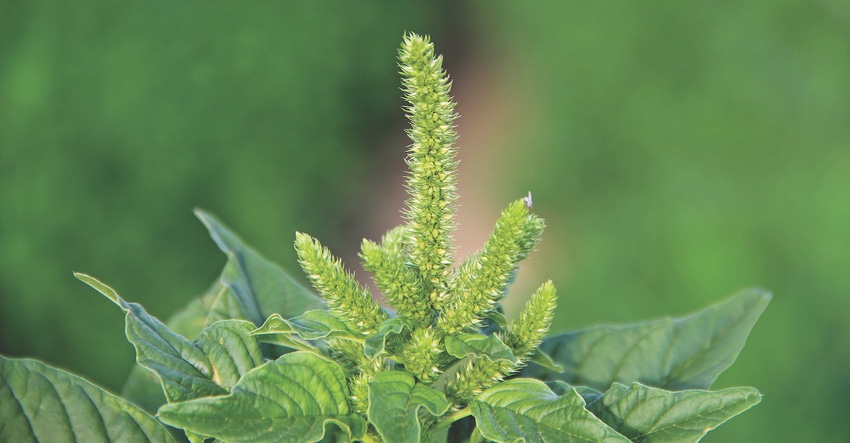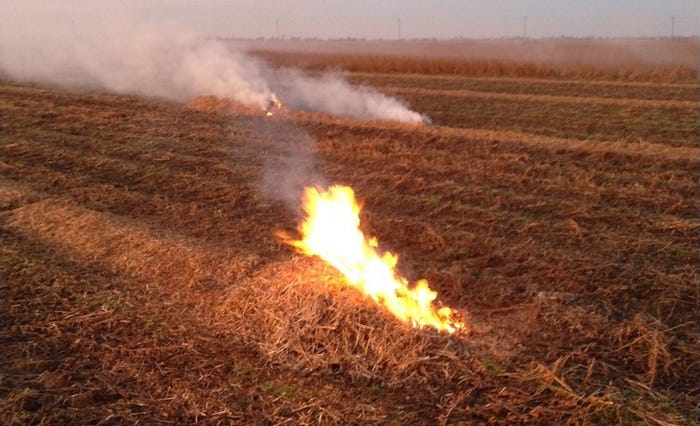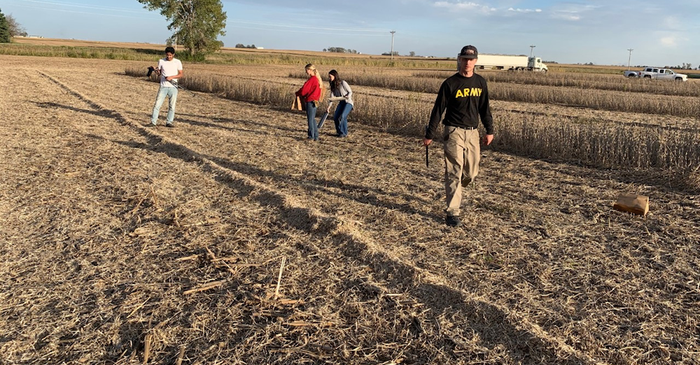
Herbicide resistance is not a new issue, but the rapid increase in biotypes with resistance to multiple herbicide modes of action is alarming. In Arkansas, Palmer amaranth populations have conquered nine different modes of action. It’s clear that new tactics are needed.
“Soil seedbank management is now the focus of our research program,” said Jason Norsworthy, Distinguished Professor and Elms Farming Chair of Weed Science for the University of Arkansas Division of Agriculture. “If we can drive down the number of seeds entering the seedbank, it will really benefit us by decreasing the weed population density in those fields. Plus, we are lessening the opportunities for more herbicide resistance to develop.”
Norsworthy was speaking on a recent U of A “Weeds AR Wild” podcast, titled, “Novel Approaches to Managing Weed Seeds in Crops.” Norsworthy’s guest was Prashant Jha, associate professor and Extension weed specialist with Iowa State University. Like Norsworthy, Jha’s research has emphasized late-season weed seedbank management and reducing weed seed inputs at harvest.
“Weed seed that enters the combine during harvest is normally redistributed across the field, which only replenishes the soil seedbank each year,” said Jha.
Norsworthy and Jha are frequent collaborators in the quest to find better tools for managing weeds like Palmer amaranth in the South and waterhemp in the Midwest. During the podcast, the scientists discussed new methods of weed seed management that are potential solutions for growers.
Narrow-windrow burning
Following a trip to Australia, Norsworthy began his own research on a weed seed control practice common to growers Down Under — narrow-windrow burning.
“It’s a novel concept that hasn’t been tested extensively in the U.S. What we found was we could take a chute, place it on the back of the combine and capture all chaff and weed seeds into a windrow. Then we come back and burn that material. In our research trials, we had 100% kill of Palmer amaranth and 100% of barnyardgrass,” said Norsworthy.

Proponents of narrow-windrow burning say it’s a cheap and effective way to manage weed seed. However, there are negative issues associated with burning, such as time commitments to burn, fire restrictions and reduced ground cover.
Chaff lining
Chaff lining is a similar practice, minus the burning, and one Jha says holds the most promise for row crop production.
Like narrow-windrow burning, chaff lining confines the chaff material (where the majority of weed seeds are) between stubble rows during harvest. But instead of buring the chaff is left to rot — relying on a mulch effect to prevent or reduce weed seed germination and emergence.
“We started working with chaff lining back in 2019 and ran the chaff liner on 100 acres of soybeans last year,” Jha said. “The chaff rows are typically established by retrofitting a combine with a baffle to separate the chaff from the crop residue and using a chute that collects and places chaff into narrow rows. Chaff lining concentrates weed seeds to less than 5% of the field, rather than spreading them across the field as in a conventional harvest.”
Jha said many growers questioned the effectiveness of just leaving the chaff in the field all winter, afraid it would be moved around the field by wind and weather, but Jha said he did not see a lot of movement off chaff lines in his research.
“We saw a lot of water hemp emerging on the chaff lines, which was expected, since you have a lot of weed seed concentrated along those lines. However, at the time of post-application in corn and soybean, the concentration of the chaff material worked for us. Because conditions were cooler and wetter along the chaff lines, the emergence of waterhemp was delayed. The weeds in the chaff line were 2-3 inches tall compared to weeds outside the chaff line that were 6-8 inches tall. This allowed our post-emergence applications to be more effective,” Jha said.
Norsworthy and Jha will soon begin working on a USDA-funded project to further evaluate the efficacy of chaff lining as a weed seed management tool.

Seed mills
Seed mills are pulled behind combines, destroying weed seeds picked up by the harvester. While issues with seed mills clogging on green residue have been reported, Norsworthy and Jha both expressed optimism about the Redekop seed control unit.
“I was very pleased with the ability of that seed mill to run in soybean that was heavily infested in green pigweed. I saw no clogging,” said Norsworthy. His data on kill rates is still being compiled.
Jha has had an opportunity to evaluate seed samples from the chaff of the Redekop unit to determine loss of viability. He says he saw more than 90% seed kill as a result of the seed mill. He referenced an Iowa grower who used a Redekop unit on more than 550 acres of soybeans last year, with no reported problems.
“From a resistance management standpoint, that’s really exciting,” Jha said.
Weed Zapper
The final tool Norsworthy and Jha discussed was the Weed Zapper — a tractor attachment that shocks weeds with 15,000 volts of electricity. Jha began evaluating the Weed Zapper this season.
“It is a pretty fascinating tool. We are basically running the zapper over the soybeans once they have canopied and the waterhemp is poking out above the canopy. The zapper only comes in contact with the weeds and doesn’t harm the soybeans,” Jha said.
He will go to the lab and evaluate how many seeds were killed and is hopeful to have more data to share soon. According to the Weed Zapper website, most models are currently sold out.
“We need as many tools as possible to try to help us win this battle against resistant weeds,” said Jha.
About the Author(s)
You May Also Like






